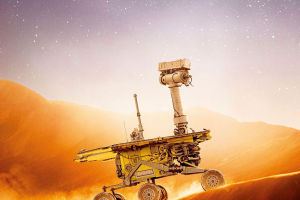Grasslands are vast areas of natural or artificial grass vegetation with a height of about one meter. These herbaceous plants are found in the semi-arid temperate zone and are primarily distributed in the temperate zones of Eurasia and North America.
Natural grasslands include grass hills, slopes, and grasslands, while improved grasslands make up the artificial type.
Grasslands are among the largest ecosystems in the world, with unique ecological environments and rich biodiversity that have captured widespread attention.
Many herbivores, such as cattle, horses, deer, and hares, call these grasslands home, while carnivorous animals such as wolves, lions, cheetahs, and leopards, make them their habitat as well. Moreover, grasslands are also important habitats for many birds, insects, and other wildlife.
The ecosystem of grasslands provides essential ecological services such as soil conservation, water conservation, carbon fixation, and climate regulation. Grasslands are also crucial agricultural and animal husbandry production areas, providing people with rich grass and livestock resources as well as food.
Unfortunately, throughout human development, the production attributes of grasslands have always been more critical than the ecological attributes. This has led to the conversion of vast areas of thriving grasslands to agricultural land.
Consequently, what is left are usually degraded grasslands with poor soil and vegetation quality, which are threatened by overgrazing.
Additionally, the growth of human settlements, desertification, fire, fragmentation of grasslands, and the invasion of alien species are also major threats to grasslands.
Therefore, countries worldwide are increasingly concerned about the sustainable development of grasslands and their effects on the environment, society, and ecology.
Grasslands are home to many sheep and cattle, and they are also the places where many herdsmen live. There are grasslands all over the world, but we will focus on the top three grasslands globally, based on their vast area.
Eurasian Steppe
The Eurasian Steppe is the widest grassland in the world, passing through many countries, including Romania, Mongolia, and China. The flora and fauna on this grassland are incredibly diverse, making it the home of thousands of animals and plants.
North American Grassland
The North American Grassland is one of the most famous grasslands globally. This broad prairie stretches through the central plains of North America between the Labrador Plateau, the Appalachian Mountains, and the Rocky Mountains.
The entire grassland is 800 kilometers long from east to west and 3200 kilometers long from north to south, with a total area of about 1.3 million square kilometers. The grassland is dominated by gramineous plants, and various resources are abundant, making it the largest grassland in the world.
South American grassland
The South American grassland is also known as the Pampas grassland and is located south of the Amazon River.
Most of the South American grasslands are in Argentina, accounting for 23 percent of the total area of Argentina. The Pampas grassland receives significant precipitation and has fertile soil with high temperatures.
The South American grassland is one of the most important animal husbandry areas in the world, with rich grassland resources and a robust animal husbandry industry. Moreover, the South American grasslands are also habitats for many rare animals, such as jaguars, leopards, and coyotes.
Grasslands are crucial ecosystems that play significant ecological, agricultural, and animal husbandry roles. Despite their importance, these grasslands are under severe threat from human activities and other factors such as desertification, fires, fragmentation, and the invasion of alien species.
Therefore, it is crucial to find sustainable ways to manage these ecosystems and promote their conservation to ensure that future generations will continue to benefit from their resources.


